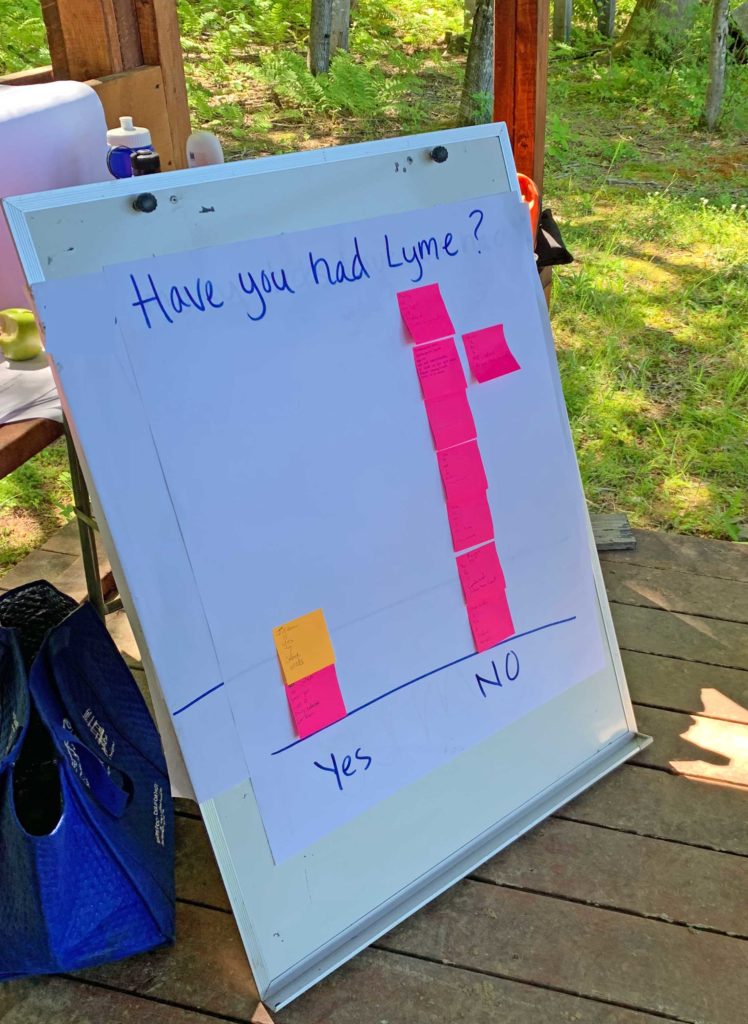Ticks and Lyme Disease Module
Lyme disease is on the move, but where is it heading and why? Deer ticks, the primary carriers of Lyme disease, have spread to some areas of the US, but not to others. Why is this the case?
In this module, Data Clubs participants put themselves in the shoes of epidemiologists at the Centers for Disease Control who use large data sets to track the spread of this dangerous disease. Participants investigate geographical data about Lyme, trends in its spread over time, and factors that make it likely that ticks will thrive and transmit the disease.
Using CODAP, a free online data platform for exploring big datasets, students look at trends over time, threshold values and ranges associated with Lyme, and relationships among several attributes that may be associated with the rate of Lyme disease. The datasets include:
- rates of Lyme disease in each of the 50 states, and how these have changed over a dozen years;
- data on where deer ticks live; and
- data on weather variables (such as summer and winter temperatures and moisture).

Activities in this fast-paced module include a mix of working with physical “case cards” and manipulating, visualizing, and analyzing data in CODAP. Participants can:
- collect data about their own experiences with ticks;
- play “Data Charades”;
- engage in a modeling game about tick ecosystems;
- learn about working with attributes; and
- investigate newspaper reports about Lyme and other tick-borne diseases.
By the end of the module, students will know a great deal about Lyme disease and its spread. They will understand the critical role that data scientists play in tracking and predicting the spread of Lyme and other tick-borne diseases to help protect public health. The module is available for interested educators by filling out the form below.
